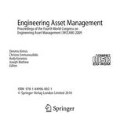Abstract
In recent years, companies have been able to gather more data from their products thanks to new technologies such as product embedded information devices (PEIDs, Kiritsis et al. (2004)), advanced sensors, internet, wireless telecommunication, and so on. Using them, companies can access working products directly, monitor and handle products remotely, and transfer generated data back to appropriate company repositories wirelessly. However, the application of the newly gathered data is still primitive since it has been difficult to obtain this kind of data without the recently developed new technologies. The newly gathered data can be applicable for product improvement in that it is transformed into appropriate information and knowledge. To this end, we propose a new method to manage the newly gathered data to complete closed-loop PLM. The usage data gathered at the MOL phase is transferred to the BOL phase for design modification so as to improve the product. To do this, we define new terms regarding function performance considering the historical change of function performance. The proposed definitions are developed to be used in design modification so that they help engineers to understand components/parts working status during the usage period of a product. Based on the evaluation of components/parts working status, the critical components/parts are discriminated. For the found critical components/parts, the working status of them is examined and correlated with field data which consists of operational and environmental data. The correlation provides engineers with critical field data which has an important effect on the worse working status. Hence, the proposed method provides the transformation from usage data gathered in the MOL phase to information for design improvement in the BOL phase. To verify our method, we use a locomotive case study.
Access this chapter
Tax calculation will be finalised at checkout
Purchases are for personal use only
Preview
Unable to display preview. Download preview PDF.
References
Bansal, D., D. J. Evans, et al. (2005) A Real-Time Predictive Maintenance System for Machine Systems - An Alternative to Expensive Motion Sensing Technology. Sensors for Industry Conference, 2005.
Bucchianico, A. et al. (2004) A multi-scale approach to functional signature analysis for product end-of-life management. Quality and Reliability Engineering International, 20(5), 457-467.
Chang-Ching, L. & T. Hsien-Yu (2005) A neural network application for reliability modelling and condition-based predictive maintenance. International Journal of Advanced Manufacturing Technology, 25(1-2), 174-179.
Chin, K.-S., A. Chan, et al. (2008) Development of a fuzzy FMEA based product design system. International Journal of Advanced Manufacturing Technology, 36(7-8), 633-649.
Delaney, K. D. & P. Phelan (2009) Design improvement using process capability data. Journal of Materials Processing Technology, 209(1), 619-624.
Djurdjanovic, D. et al. (2003) Watchdog Agent - an infotronics-based prognostics approach for product performance degradation assessment and prediction. Advanced Engineering Informatics, 17(3-4), 109-125.
Giese, H. and M. Tichy (2006) Component-based hazard analysis: Optimal designs, product lines, and onlinereconfiguration. Gdansk, Poland, Springer Verlag.
Jayaram, J. S. R. & Girish, T. (2005) Reliability prediction through degradation data modeling using a quasi-likelihood approach. Annual Reliability and Maintainability Symposium, 2005 Proceedings, pp.193--199.
Kiritsis, D. (2004) Ubiquitous product lifecycle management using product embedded information devices. Intelligent Maintenance System (IMS) 2004 International Conference, Arles.
Lee, J. et al. (2006) Intelligent prognostics tools and e-maintenance. Computers in Industry, 57(6), 476-489.
Osteras, T. et al. (2006) Product performance and specification in new product development. Journal of Engineering Design, 17(2), 177-192.
Stone, R., I. Tumer, et al. (2005) Linking product functionality to historic failures to improve failure analysis in design. Research in Engineering Design, 16(1), 96-108.
Tang, L. C. et al. (2004) Planning of step-stress accelerated degradation test. Annual Reliability and Maintainability Symposium, 2004 Proceedings, pp.287-292.
Xiaoling, B., X. Quanzhi, et al. (2007) Equipment fault forecasting based on a two-level hierarchical model. Piscataway, NJ, USA, IEEE.
Zampino, E. J. (2001) Application of fault-tree analysis to troubleshooting the NASA GRC icing research tunnel. Piscataway, NJ, USA, IEEE.
Author information
Authors and Affiliations
Editor information
Editors and Affiliations
Rights and permissions
Copyright information
© 2010 Springer-Verlag
About this paper
Cite this paper
Shin, JH., Kiritsis, D., Xirouchakis, P. (2010). Function performance evaluation and its application for design modification based on product usage data. In: Kiritsis, D., Emmanouilidis, C., Koronios, A., Mathew, J. (eds) Engineering Asset Lifecycle Management. Springer, London. https://doi.org/10.1007/978-0-85729-320-6_15
Download citation
DOI: https://doi.org/10.1007/978-0-85729-320-6_15
Publisher Name: Springer, London
Print ISBN: 978-0-85729-321-3
Online ISBN: 978-0-85729-320-6
eBook Packages: EngineeringEngineering (R0)

